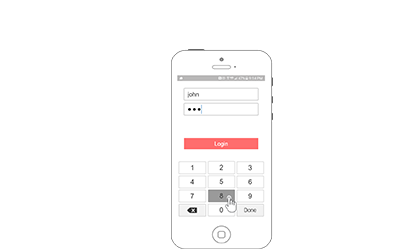Adaptive Authentication
The majority of user logins are low risk and can be identified as such using Crysp Verification APIs. The use of multiple independent signals ensures that false positives and negatives are rare. By analyzing how users fill-in their passwords and other form-fields, Crysp also helps identify bots and stolen passwords.
For logins that are determined to be high risk, Crysp can be used to complete a push notification based Two-Factor Authentication (2FA). Unlike other adaptive 2FA solutions, even the low-risk logins protected by Crysp 2FA are in effect verified by two factors, which enables it to meet standard 2FA compliance requirements.

Mobile-Friendly Authentication
Mobile users consistently express a preference for PINs over passwords, but there are legitimate concerns about the level of assurance provided by PINs. Crysp Verification APIs enable extraction of additional security from passively-obtained signals, which combined with the entropy of the PINs provide greater assurance than with just passwords.
Traditional 2FA and password resets relying on a mobile phone as an out-of-band channel are unsuitable for use on the mobile phone itself. Crysp Verification APIs enable alternatives based on free-form gestures familiar to users, such as their initials and signatures. Crysp Gesture Verify makes even simple gestures hard to forge since an impostor would have to match the swiping behavior of the actual user.

Passwordless Authentication
Crysp enables authentication with one-tap verification of push notifications sent to a registered mobile device or email account. Users can be kept logged-in on devices once authenticated. This authentication method avoids having to store and protect user secrets and is no less secure than the methods used today that anyway rely on SMS codes and email links for password resets.
On devices with fingerprint readers, Crysp can also enable passwordless authentication with Fingerprint Verify. The Crysp platform also provides the framework for integrating other types of biometrics, such as face and iris recognition. This authentication method can be used in conjunction with the other Verification APIs provided by the Crysp platform.


